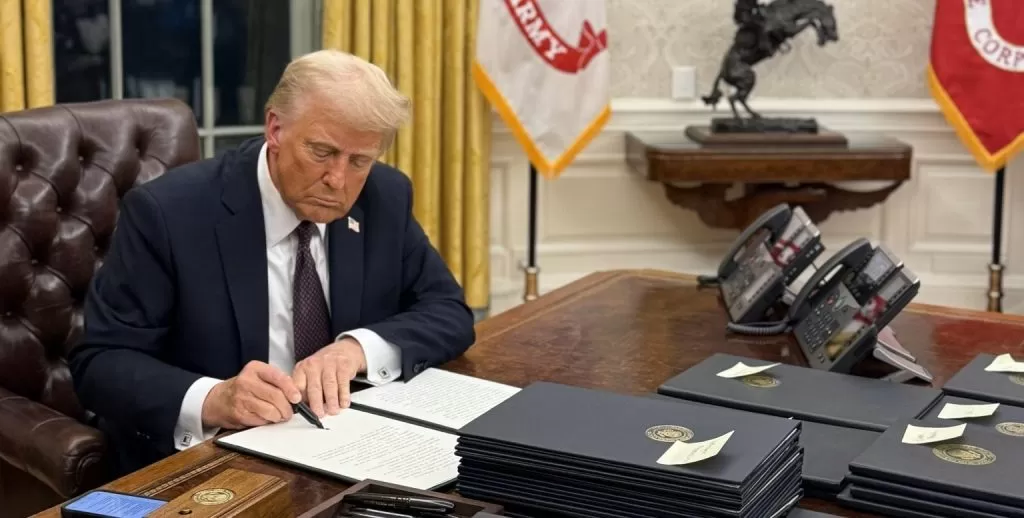Trump Administration to Restart Federal Student Loan Collections on May 5, 2025: What Borrowers Need to Know

The Trump administration has announced that federal student loan collections will resume on May 5, 2025, marking the end of a five-year pause that began during the COVID-19 pandemic. This decision will impact over 5 million borrowers who are currently behind on their payments, potentially leading to wage garnishment, withheld tax refunds, and intercepted federal benefits. As the resumption date approaches, the Department of Education is preparing an outreach campaign to help borrowers navigate their options and avoid severe financial consequences.
Background: The Pause on Collections
In March 2020, as the COVID-19 pandemic disrupted the economy, the federal government suspended collections on defaulted federal student loans under the CARES Act. This pause halted actions such as wage garnishment, tax refund offsets, and benefit seizures for borrowers who were 270 days or more behind on payments (the threshold for default). The moratorium, extended multiple times, provided relief to millions of borrowers but also left a growing number of loans in limbo, with nearly 25% of the 22 million direct loan borrowers in default by late 2024, according to Department of Education estimates.
The Trump administration, prioritizing fiscal responsibility, has decided to lift the moratorium. In a statement, administration officials emphasized the need to protect taxpayers from the burden of unpaid loans, which total over $1.7 trillion in outstanding federal student debt. “The pause was a temporary measure, and it’s time for borrowers to resume responsibility for their loans,” a Department of Education spokesperson said.
What Happens on May 5, 2025?
Starting May 5, the Department of Education will resume referring defaulted loans to the Treasury Department’s Offset Program. This program allows the government to seize:
- Federal and state tax refunds: Borrowers in default may lose their entire refund, which can be applied directly to their loan balance.
- Federal benefits: Up to 15% of Social Security payments, disability benefits, or other federal benefits may be withheld, with some protections for low-income recipients.
- Wages: After a 30-day warning period, employers may be ordered to garnish up to 15% of a borrower’s disposable income until the loan is repaid or brought out of default.
These measures apply only to borrowers in default, defined as those who have not made a payment in 270 days or more. Borrowers who are delinquent but not yet in default (less than 270 days behind) will not face immediate collections but risk default if they do not act.
Borrower Options to Avoid Collections
The Department of Education is encouraging borrowers to take proactive steps to avoid the financial fallout of resumed collections. Options include:
- Make a Payment: A single payment can bring a loan out of default status, stopping collections. Borrowers can contact their loan servicer to arrange payments.
- Enroll in an Income-Driven Repayment (IDR) Plan: IDR plans cap monthly payments based on income and family size, often reducing payments to $0 for low-income borrowers. The administration has promised an “enhanced income-driven repayment process” to streamline enrollment, though details remain limited.
- Loan Rehabilitation: Borrowers can rehabilitate defaulted loans by making nine affordable, on-time payments over 10 months. This removes the default status, stops collections, and may restore eligibility for benefits like deferment or forbearance.
- Loan Consolidation: Consolidating defaulted loans into a new Direct Consolidation Loan can also resolve default status, though it requires enrolling in an IDR plan or making qualifying payments.
The Department of Education plans to launch an outreach campaign in early 2025, including emails, phone calls, and text messages to notify borrowers of their status and options. Borrowers can also check their loan status and contact their servicer through the Federal Student Aid website (studentaid.gov).
Critics Raise Concerns
The decision to restart collections has sparked debate. Consumer advocates argue that the move could disproportionately harm vulnerable borrowers, including low-income individuals, seniors, and those with disabilities. “Seizing Social Security or tax refunds from people already struggling to make ends meet is a recipe for financial disaster,” said Sarah Thompson, a policy analyst at the Center for Responsible Lending. Critics also point to the complexity of navigating repayment options, particularly for borrowers who have been out of the system for years.
The administration counters that the pause has cost taxpayers billions and that resuming collections is necessary to ensure the sustainability of the federal loan program. They also highlight the availability of IDR plans and rehabilitation options as pathways to avoid hardship. “We’re not just restarting collections; we’re giving borrowers tools to manage their debt responsibly,” the Department of Education spokesperson said.
Economic and Political Context
The resumption of collections comes amid broader discussions about student loan policy. The Biden administration’s attempts at widespread loan forgiveness were blocked by courts, leaving many borrowers frustrated and facing mounting debt. The Trump administration has signaled a focus on reducing federal spending, including tightening oversight of loan programs. Some analysts speculate that the May 5 restart could be a precursor to further reforms, such as limiting IDR generosity or accelerating collections processes.
Economists warn that resuming collections could have ripple effects. Withheld tax refunds and garnished wages may reduce consumer spending, particularly for lower-income households. Conversely, increased loan repayments could reduce the federal deficit, aligning with the administration’s fiscal goals.
What Borrowers Should Do Now
Borrowers are urged to act quickly to avoid collections. Key steps include:
- Check Loan Status: Visit studentaid.gov to confirm whether your loans are in default or delinquency.
- Contact Your Loan Servicer: Servicers can provide details on payment plans, rehabilitation, or consolidation. Common servicers include Nelnet, MOHELA, and Aidvantage.
- Explore IDR Plans: Apply for an IDR plan if your income is low or unstable. The new “enhanced” process may simplify this, but borrowers should apply early to avoid delays.
- Seek Help: Nonprofit organizations like the National Consumer Law Center offer free resources for navigating student loan issues.
With less than four months until collections resume, time is critical. Borrowers who act now can protect their finances and avoid the stress of wage garnishment or lost refunds.
Looking Ahead
The resumption of federal student loan collections on May 5, 2025, marks a significant shift in U.S. higher education policy. While the administration frames it as a necessary step to restore fiscal discipline, borrowers face the challenge of navigating a complex system under tight deadlines. As the outreach campaign rolls out and the new IDR process takes shape, the success of this transition will depend on how effectively the government communicates with borrowers and whether struggling Americans can access the relief they need.
For more information, borrowers can visit studentaid.gov or contact their loan servicer directly. The clock is ticking, and proactive steps today could make all the difference come May.
This article is based on information available as of April 21, 2025, and reflects current policy announcements from the Trump administration.






